The triceps pushdown is one of the simplest and most effective exercises for training your entire triceps.
In this article, you’ll learn what the triceps pushdown is, the benefits of the triceps pushdown, how to perform it with proper form, the best triceps cable pushdown alternatives, and more.
What Is the Triceps Pushdown?
The triceps pushdown is a triceps isolation exercise performed using a cable machine.
To perform it, you grip a handle attached to a high cable pulley and push the handle toward the floor by straightening your elbows, then return to the starting point.
You can use several different handles to perform the “tri” push down, including the rope handle, straight bar, EZ bar, and V bar. As such, you often hear people refer to the exercise as the “bar triceps pushdown,” “tricep rope pushdown,” and so forth.
Benefits of the Triceps Pushdown
1. It trains your entire triceps.
When trained through a full range of motion, the triceps rope pushdown effectively trains all 3 triceps heads, making it an excellent exercise for overall triceps size.
You can also emphasize the “meatiest” part of your upper arms—the long head—by placing your elbows by your sides or slightly behind your torso.
2. It maximizes triceps development.
Research shows that heavy pressing isn’t enough to maximize triceps development.
Instead, your triceps will grow significantly more if you supplement your heavy benching and overhead pressing with isolation exercises, such as the triceps rope pushdown.
3. It allows you to train your triceps when your other “pushing” muscles are tired.
If you only train your triceps with compound “pushing” exercises, you often have to stop training when your chest and shoulders are tired, even though your triceps can handle more.
The tri push down is helpful in this scenario because it allows you to train your triceps after your other pushing muscle groups are fried, ensuring they get the stimulus they need to grow.
Triceps Pushdown: Muscles Worked
The pushdown for triceps trains the 3 heads of the triceps. Here’s how they look:
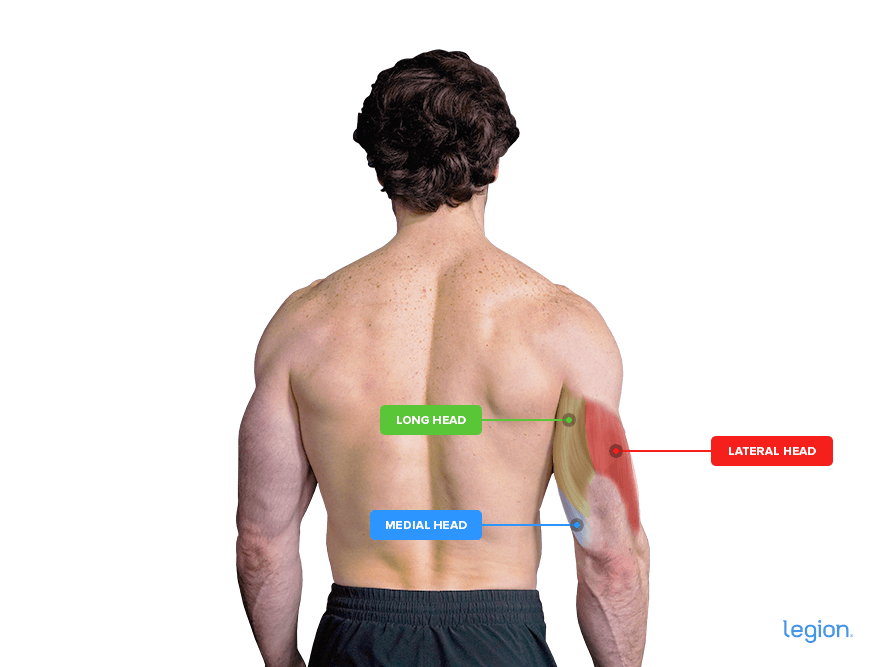
How to Do the Triceps Pushdown
The best way to learn how to do the triceps extension is to split the exercise into three parts: set up, push down, and ascend.
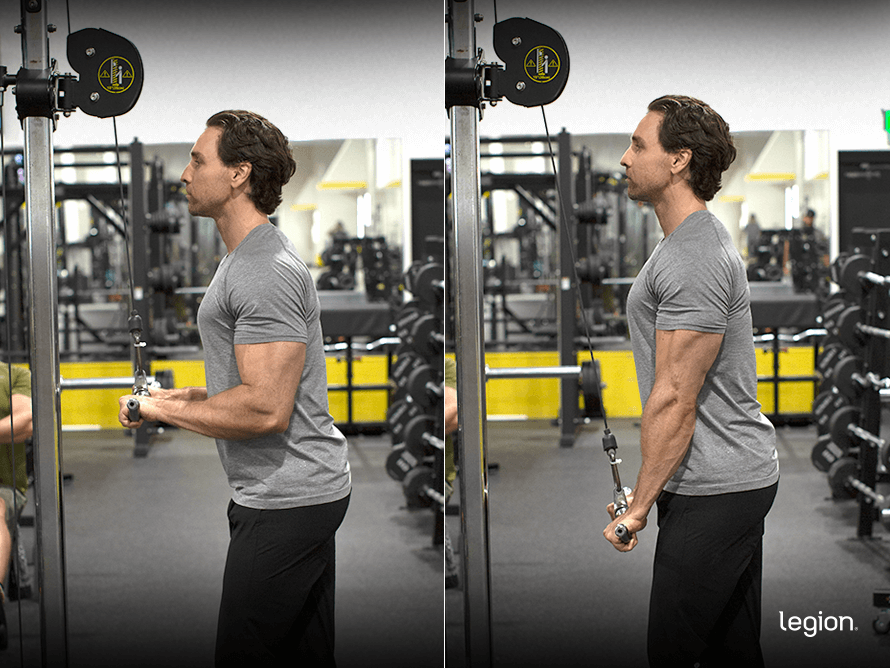
1. Set up
Adjust the pulley on a cable machine to the highest setting and attach your preferred handle (the straight metal or rope handle, EZ bar, and V bar are all good options), then stand in front of it with your feet about shoulder-width apart.
Grab the handle with both hands (if you’re using a bar attachment, your palms should face the floor), take a step back to support the weight in your hands, and lean slightly forward while pulling your elbows toward your torso so that your shoulders are over your hands.
2. Push down
Without changing your upper-body angle, push the handle straight down until your arms are fully extended, keeping your elbows at your sides.
3. Ascend
Raise your hands and return to the starting position. This is a mirror image of what you did during the extension.
Here’s how the pushdown for triceps should look when you put it all together:
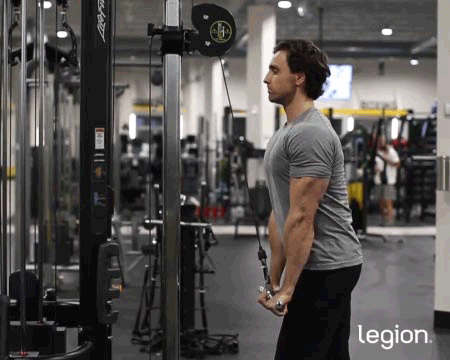
The Best Triceps Pushdown Alternatives
1. Reverse-Grip Triceps Pushdown

The reverse-grip triceps pushdown (or “underhand triceps pushdown”) is the same as the regular pushdown for triceps, only your palms face the ceiling instead of the floor, which some find more comfortable on the elbows.
2. Banded Triceps Pushdown
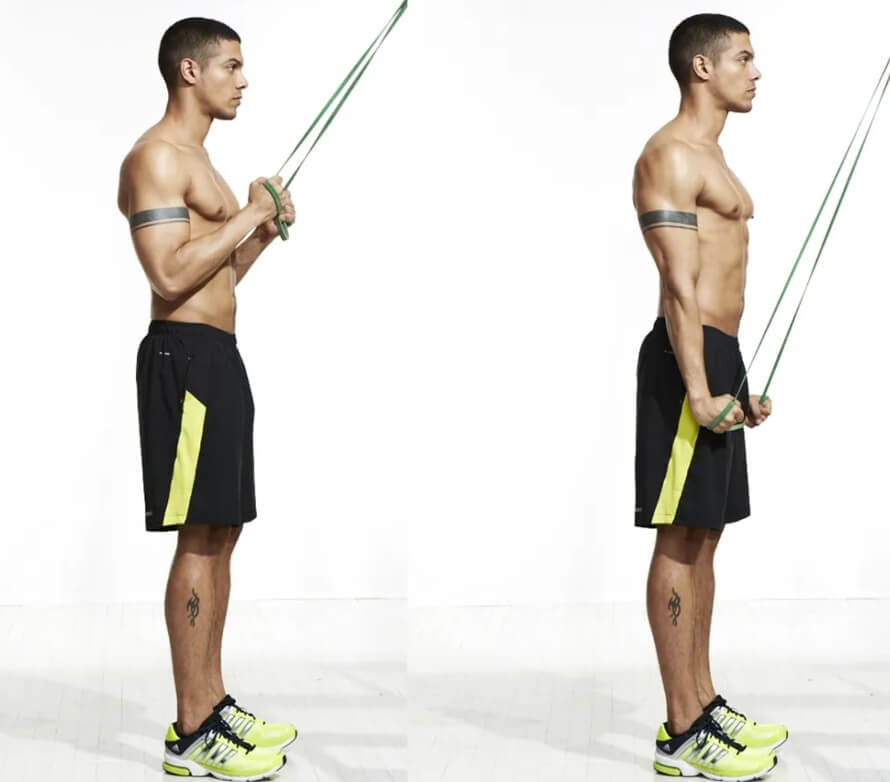
The resistance band triceps pushdown is a good variation if you have limited space and equipment. However, it places no tension on your triceps when stretched, making it less effective than the cable pushdown for gaining size and strength.
3. Machine Triceps Pushdown
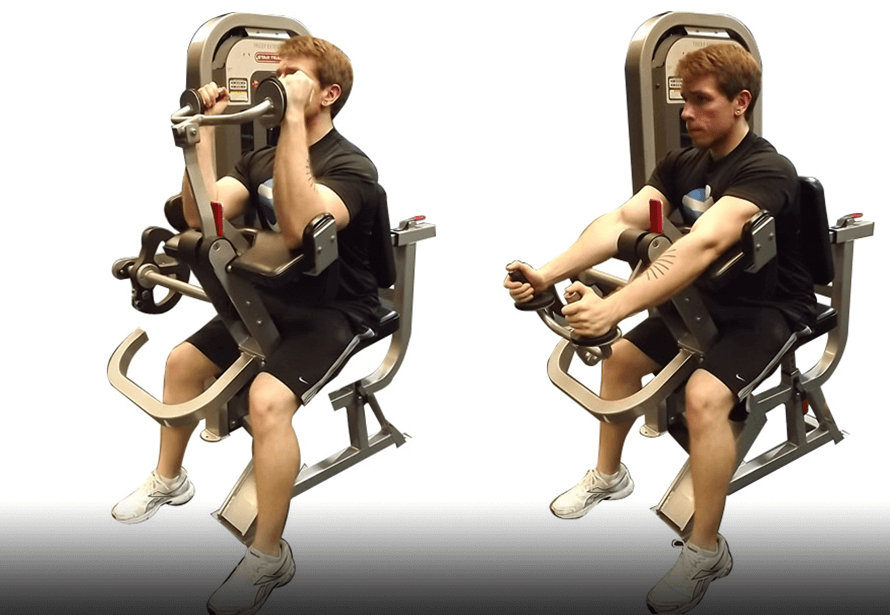
The machine triceps pushdown is easier to learn and perform than the cable tri push down because it requires less balance, coordination, and stabilization, making it a good variation for people who are new to weightlifting or working around an injury.
Scientific References +
- Kholinne, Erica, et al. “The Different Role of Each Head of the Triceps Brachii Muscle in Elbow Extension.” Acta Orthopaedica et Traumatologica Turcica, vol. 52, no. 3, 1 May 2018, pp. 201–205, www.ncbi.nlm.nih.gov/pmc/articles/PMC6136322/, https://doi.org/10.1016/j.aott.2018.02.005.
- Hussain, Jawad, et al. “Muscle Fatigue in the Three Heads of Triceps Brachii during Intensity and Speed Variations of Triceps Push-down Exercise.” Frontiers in Physiology, vol. 11, 21 Feb. 2020, https://doi.org/10.3389/fphys.2020.00112. Accessed 2 Oct. 2020.
- Brandão, Lucas, et al. “Varying the Order of Combinations of Single- and Multi-Joint Exercises Differentially Affects Resistance Training Adaptations.” Journal of Strength and Conditioning Research, Mar. 2020, p. 1, https://doi.org/10.1519/jsc.0000000000003550. Accessed 26 Mar. 2020.
- Oranchuk, Dustin J., et al. “Isometric Training and Long-Term Adaptations: Effects of Muscle Length, Intensity, and Intent: A Systematic Review.” Scandinavian Journal of Medicine & Science in Sports, vol. 29, no. 4, 13 Jan. 2019, pp. 484–503, https://doi.org/10.1111/sms.13375.










